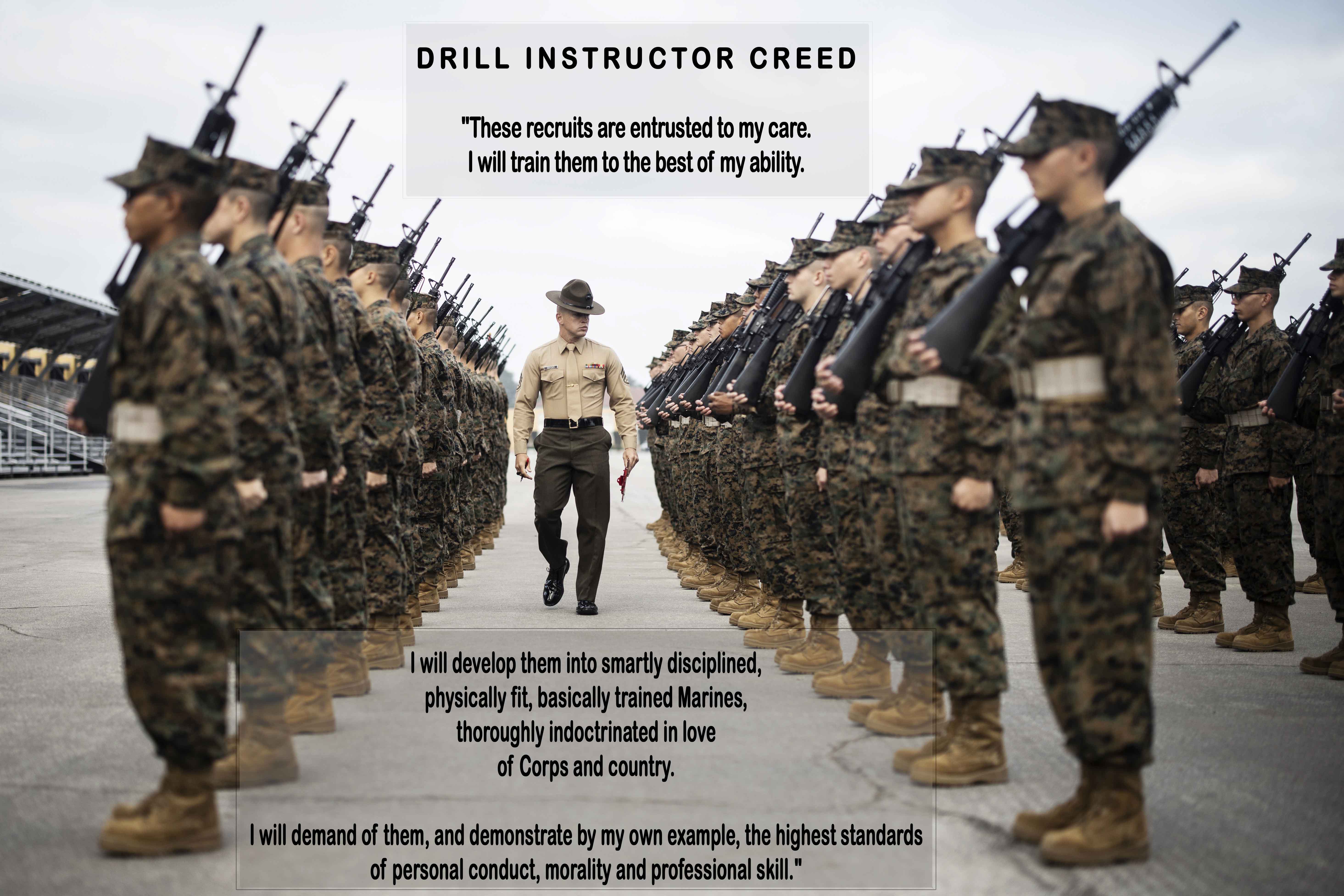 The mission of Drill Instructor School is to further develop the leadership, command
The mission of Drill Instructor School is to further develop the leadership, command presence, instructional ability, physical fitness, and knowledge of selected Officers, Staff
Non-Commissioned and Non-Commissioned Officers in order to successfully perform
the duties of a Series Commander and Drill Instructor.